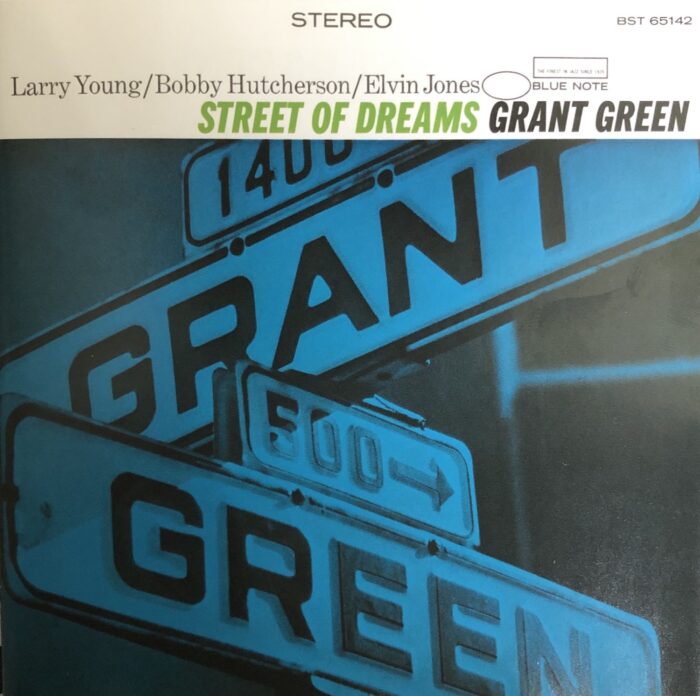
At the risk of sounding like a broken record, Bobby Hutcherson’s genius graced some of Blue Note’s finest sessions, from McCoy Tyner’s Time for Tyner (1969) to Grant Green’s Street of Dreams (1967).
My personal favourite jazz guitarist, Green started performing in St. Louis, Missouri, at the age of 13 in a gospel group. More inspired by the bebop sax lines of Charlie Parker than guitarists in general (although he loved Charlie Christian, who pioneered the electric guitar as early as 1936), Green favoured clean, linear solos over chords. This gives his playing an irresistible sense of logic and clarity; his solos just seem to make sense.
In 1959 he was discovered by the saxophonist Lou Donaldson and subsequently moved to New York, where Blue Note had him lead organ trios; organ, drums, guitar. These sessions are interesting because the organ doubles as a bass and piano, and Green liked the way the instrument blended with his guitar. He also dug pop music, covering songs by the Beatles and James Brown on the Blue Note albums I Want to Hold Your Hand (1966) and Green Is Beautiful (1970). It was probably no coincidence that he later lived next door to Stevie Wonder.
In the 1970s Green embraced a jazz-funk style, earning him the moniker “the Father of Acid Jazz” but struggling to secure recording contracts and growing disillusioned with the business. “During the 1970s [Green] made some pretty lame records,” wrote Michael Cuscuna. These records were heavily sampled by the likes of A Tribe Called Quest and Public Enemy, and according to Green’s son Greg, “We made more money off of those records than the jazz records,” so it’s swings and roundabouts.
Speaking of swing, Green’s best work came in the 1960s Blue Note period, recording classic hard bop dates Idle Moments (1965), Matador (not released until 1979) and Street of Dreams, which saw him return to an organ setting with the great(s) Larry Young and Elvin Jones. The quartet plays long versions of four standards, capturing the dreamy pleasure of an early morning view; Young’s organ provides a bed of clouds, Hutcherson’s vibes a shimmering sunrise and Green’s guitar cuts through the air with trademark crispness. He said in 1975: “I’m influenced by natural rhythm. Natural sources. I listen to the wind. You’ve got to tune into that and create.”
You can hear the wind (or at least a cool breeze) on ‘Lazy Afternoon’, written by Jerome Moross and John La Touche for 1954 Broadway musical The Golden Apple. The band puts the song in 5/4, evoking that gentle breeze, that ebb and flow; a mood of mellow contemplation or floating dreamlike above a street. Look down there, it’s Stevie Wonder’s house!
Want more jazz guitar? Don’t fret. Try our ‘Six String Stars’ playlist.
If you enjoyed this post and want to stay updated, make sure to subscribe to our Spotify playlist and follow us on Instagram and Twitter!
